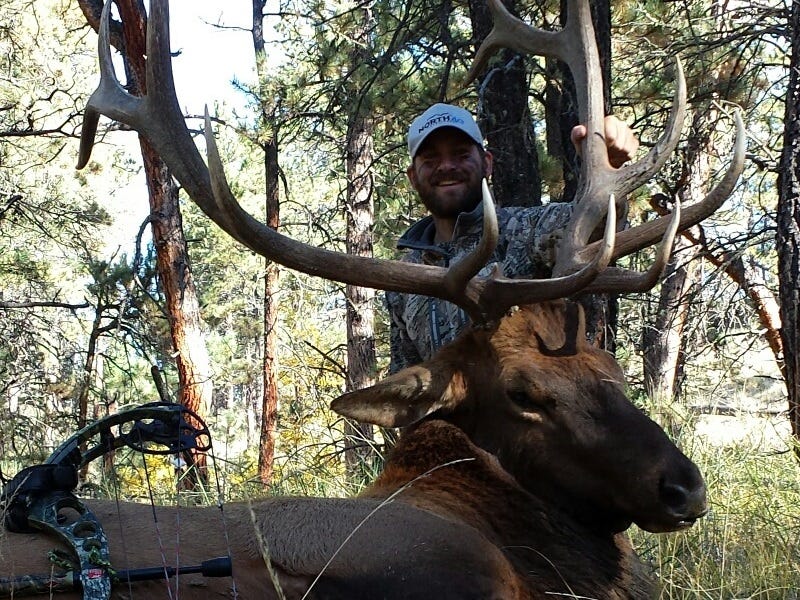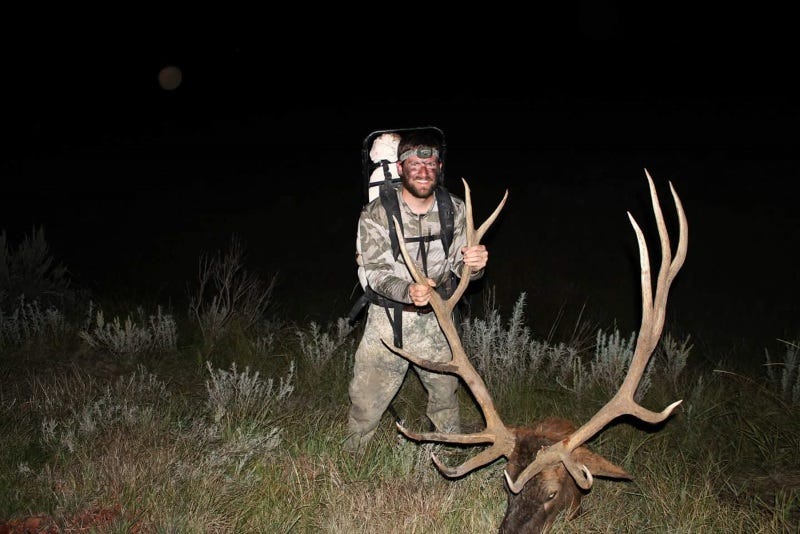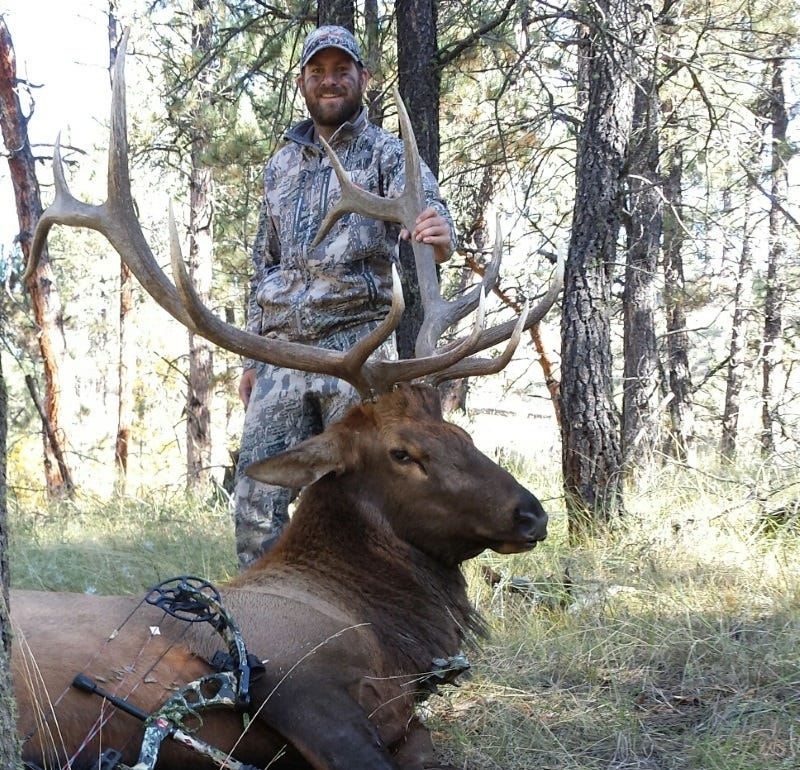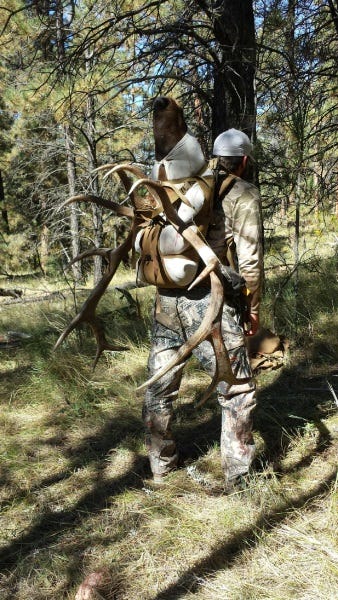Calling Elk: The Mistakes I Made... and what I Learned

There’s a scene in the movie Lonesome Dove where Captain Call gives Newt a six-shooter on their way to steal horses in Mexico. As he hands him the gun Call says, “It’s better to have it and not need it, than to need it and not have it.” I feel the same way about most of my hunting equipment, including game calls. And that theory proved true just a few years back, at last light, when I was about 10 yards from a bull elk in a wallow.
I couldn’t see him, but I could hear every heavy breath and the plop of his hooves when they came free from the gumbo. This was a situation where a lot could have gone wrong, but because I spent a couple bucks on a mouth call and was prepared to use it, the hunt ended in my favor.
It had taken me six years and hundreds of boot miles to finally draw on a bull, and the call helped me when I needed it. Since that time, I’ve experienced several more “Aha” moments while calling, and these experiences should help you during your fall hunts this year.
Call Less, Way Less
Call companies send out their best callers to put on seminars and compete in calling competitions. This is all good, and they sound great, but what you aren’t being told (very often, anyways) is that squawking through the elk woods probably does more harm than good. Yes, I’ve walked into elk herds that are extremely vocal and, in turn, have been very vocal with them. But this isn’t the norm, and when it does happen it usually doesn’t last long.
For instance, the elk I described above was killed when I made just two mews from a mouth call. But before that time I was patient, called sparingly, and only moved when I should have, which put me in a killing position. I was ready when that bull finally made his move. Since that time my mantra has been, move more, call less.
Read an exclusive interview with Weston Clark, VP of Duel Game Calls.
You don’t have to be a calling champ to trick an elk
Elk sound similar to each other, but they don’t all sound the same. I’ve heard elk choke in the middle of a bugle—so they aren’t perfect. Neither are we. Some of the funniest moments at elk camp are right after someone makes the most horrific sounding bugle “anyone’s ever heard.”
The tip here? We all know we need to spend more time practicing with our elk calls, but the reality is most of us are pretty dang busy. So, how do you make time? One trick is to leave your calls in your car and practice on the way to swim lessons, or on the way to the kid’s baseball game. If the call is there and you can see it you are likely to practice with it more often.
Sometimes you don’t need to call at all
Once, on an early season hunt, I dropped into a canyon with five bulls bugling halfheartedly. After getting the wind right I planned my attack. The first bull I encountered was a young five-point that I thought would be easy to call in. Unfortunately, I thought wrong—when I called, that young bull ran away.
Sometimes you do need THESE accessories, however.
Fortunately, a few minutes later I found myself about 150 yards away from two bugling six-point bulls. Rather than repeating my mistake I tucked my mouth call into a pocket, knocked an arrow and snuck into bow range across an open sagebrush flat. Sometimes it pays to keep quiet and use your stalking skills instead.
Get in Close, then Call
A mistake I made early in my hunting career was calling to elk that were a long way away. I must have watched too many elk hunting videos and thought I could call them in from across the longest and broadest canyons imaginable. Sure, we all know “that guy” who called one in from a mile away, but let’s be real—that guy is most likely not going to be you . . . and it certainly wasn’t me.
If an elk is being vocal, that means his attention is elsewhere. Use that to your advantage. Move in and get close while he screams for all of the world to hear. When sneaking in, there is a good chance you’ll encounter an elk doing the same thing—sneaking up to him. Be on the lookout for those satellite bulls and don’t worry about spooking them. Elk are accustomed to a lot of commotion during the rut and, more often than not, bumping a satellite bull won’t mess things up for you.
Need a game call? We've got some incredible options online here.
When sneaking in on a bugling bull, I like to get within a minimum of 150 yards before I call. You’ll have to gauge the situation, but this is when I’ve had some of my best calling encounters. Catch the right bull, in the right situation, in close quarters, and you could have the hunt of a lifetime unfold in front of you.
Tip: Better have your arrow knocked before you rip a bugle in his kitchen.
 Photo credit: Jake Best
Photo credit: Jake BestDiversity of elk calls
I have a favorite call that was given to me by my elk hunting mentor. Actually, that call is hanging on a branch somewhere, but I’ve replaced it with the same one several times (damn trees stealing my elk calls). That call goes on every hunt, but I also carry at least two other options on me, and a few more in my pack. Sometimes elk are like spring turkeys and they’ll ignore one call, but 30 seconds later go crazy for another. Simply put, diversity in calls is a good thing.
Remember, it’s easy to get caught up in the hype and excitement of calling in a big bull, but sometimes you need to just move more and call less.


